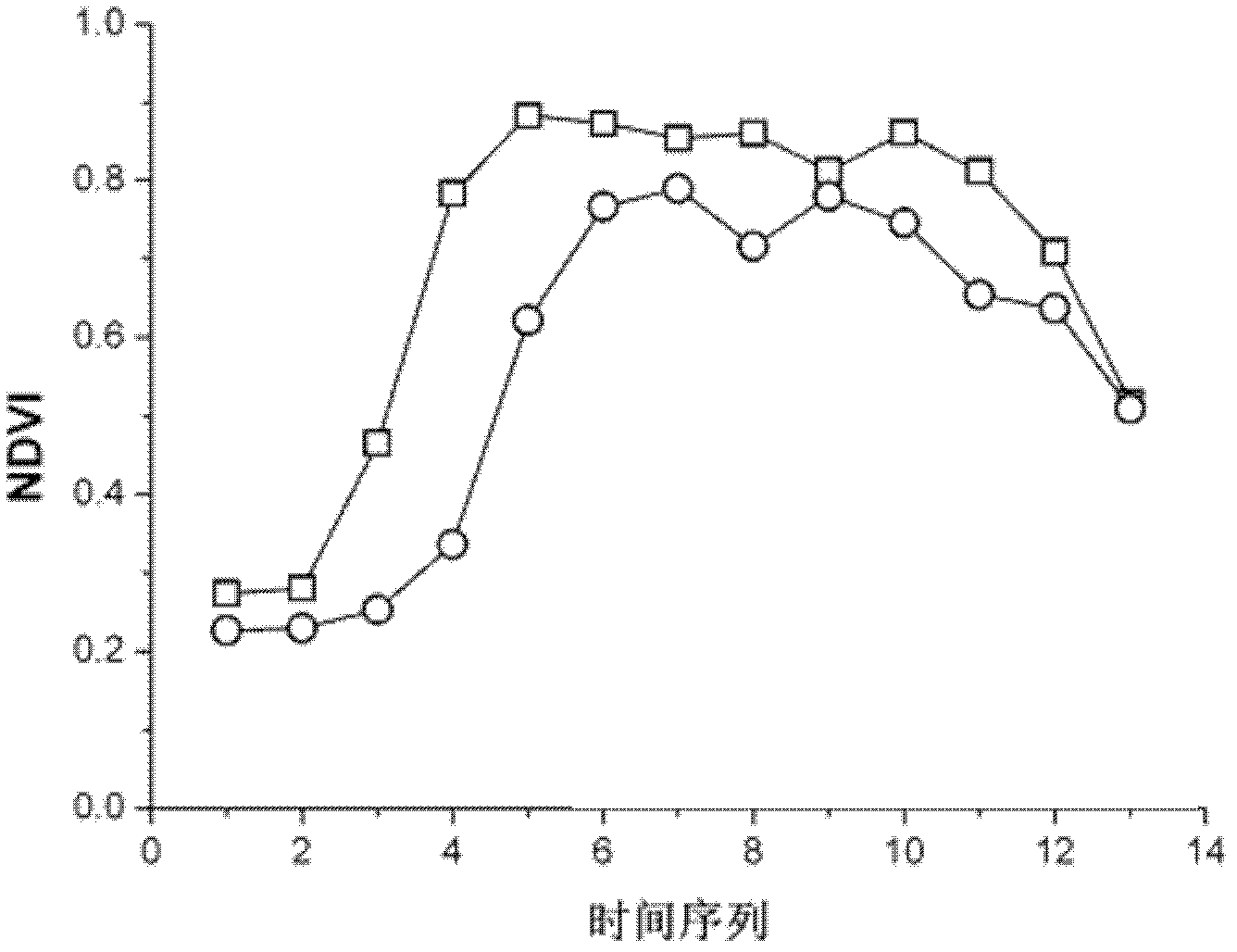Method for classifying remote sensing images blended with high-space high-temporal-resolution data by object oriented technology
A high-time-resolution, object-oriented technology, applied in the field of remote sensing image land cover classification, can solve the problems of inability to distinguish "different objects with the same spectrum" land cover types, inappropriate for low- and medium-resolution remote sensing images, etc. Effects of speed, clear geographic significance
- Summary
- Abstract
- Description
- Claims
- Application Information
AI Technical Summary
Problems solved by technology
Method used
Image
Examples
specific Embodiment approach 1
[0019] Specific implementation mode one: the following combination image 3 This embodiment will be described. The remote sensing image classification method using object-oriented technology to fuse high spatial and high temporal resolution data described in this embodiment includes the following steps:
[0020] Step 1: apply the Savitzky-Golay (SG) filter to filter the MODIS-NDVI time series data, remove error information, eliminate the noise generated by the sensor and the acquisition process, and obtain a stable phenological information source;
[0021] Step 2: From the stable phenological information source obtained in Step 1, determine the MODIS-NDVI time-series curve of typical vegetation in remote sensing images to be classified, that is, the phenological characteristics of typical vegetation;
[0022] Step 3: Use MODIS-NDVI time series data to obtain vegetation phenology information in the TM image to be classified, and perform multi-layer and multi-scale segmentation...
specific Embodiment approach 2
[0027] Specific implementation mode two: the following combination figure 1 This embodiment is described. This embodiment is a further description of Embodiment 1. The non-vegetation objects mentioned in Step 5 of Embodiment 1 are water bodies, bare land, and artificial construction sites.
specific Embodiment
[0029] Step 1: Obtain the phenology information of various ground objects in the test area as training samples, and obtain the NDVI variation curve of typical vegetation types in the test area from the beginning of March to the end of September in 2009 according to the vegetation index product MOD13Q1 of the medium-resolution imaging spectrometer MODIS.
[0030] Step 2: Apply the Savitzky-Golay (SG) filter to filter the MODIS-NDVI time series data to remove noise to obtain stable phenological information.
[0031] Step 3: Carry out multi-scale segmentation on the Landsat TM image to obtain a series of spatially adjacent and homogeneous segmentation units, and take each unit as an object. Table 1 shows the parameter settings for multi-scale segmentation during object-oriented classification. The Landsat TM track number used for the test is P120R31, and the time is July 15, 2009.
[0032] Table 1.
[0033] Segmentation scale
form factor
smooth...
PUM
 Login to View More
Login to View More Abstract
Description
Claims
Application Information
 Login to View More
Login to View More - R&D
- Intellectual Property
- Life Sciences
- Materials
- Tech Scout
- Unparalleled Data Quality
- Higher Quality Content
- 60% Fewer Hallucinations
Browse by: Latest US Patents, China's latest patents, Technical Efficacy Thesaurus, Application Domain, Technology Topic, Popular Technical Reports.
© 2025 PatSnap. All rights reserved.Legal|Privacy policy|Modern Slavery Act Transparency Statement|Sitemap|About US| Contact US: help@patsnap.com



